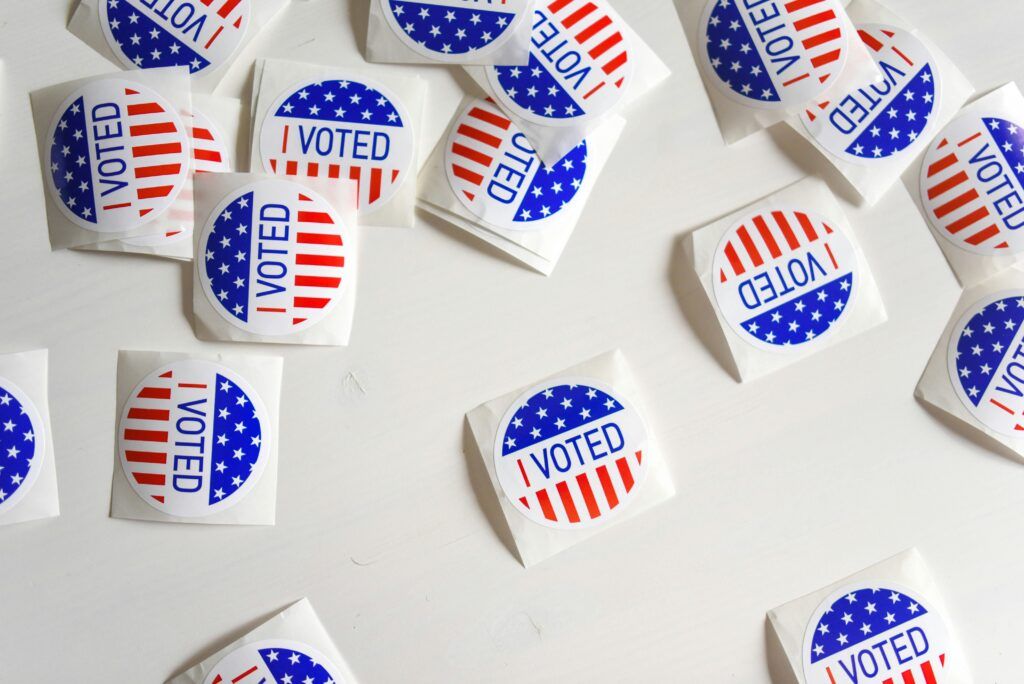With Election Day next week, best practices for internal and external communication around the election are top of mind for many. This is especially true of our clients as they navigate polarizing points of view and determine if, when, where, and how they engage in the conversation.
Ultimately, how a company approaches this topic is deeply specific and individual to the brand. There are complex considerations including your core audiences, policy impact on your business, authenticity to your brand, and risks versus rewards.
While this is a one-on-one client conversation, our Issues Response Team has provided some over-arching guidelines to support our clients in the week ahead – and we wanted to share them with you, too.
1. Start with Your Team
First and foremost, communication starts with your internal team. We recommend that internal communication at the C-level stays bipartisan to be respectful of the various points of view of your team. Highly-charged discussions circle the election, so here some things to consider:
- Encourage your team to flex their civic duty and get out to vote, ensuring they have time off in their day to step away and get to the polls.
- Acknowledge that Election Day (and the days leading up to and following it) can be emotionally charged and may require stepping away for small breaks. In communications roles, this need may be even more pronounced as the nature of the work makes it hard to break away from the news cycle.
- Remind your employees that team members will have various points of view on the election and your focus as an organization is to create a respectful, inclusive, and safe environment for all team members. You may also consider linking to existing social media guidelines or any internal resources that outline respectful discourse as a healthy refresher.
- Share bipartisan educational materials/resources to encourage your team to educate themselves in advance of Election Day on key issues – especially any that directly impact your business/industry.
2. Be Mindful on Social Media
Your messages, tone and imagery on social media leading up to and on Election Day should be thoughtfully planned.
- Consider a GOTV (“get out the vote”) message on your corporate social handle.
- Share balanced resources that can help educate your key audiences on any policies on the ballot that directly impact your industry.
- Review and evaluate scheduled organic content and paid campaigns in play and consider “pausing” on Election Day, sticking to just the GOTV message. This can help you avoid appearing tone deaf to the bigger conversations on a day where ill-timed content may not be well received.
If C-level leaders want to take a specific position on the election and have done so in the past, we suggest keeping this to a personal LinkedIn channel.
3. Level-Set on Media Expectations
Unsurprisingly, the week leading up to and following Election Day will be owned by election discussions and updates, especially across business and broadcast media outlets. Major announcements or campaign launches during this timeframe (unless directly tied to the election) will struggle to gain media attention.
Some specific guidance in engaging with the media this week and next:
- Hold proactive media pitching on Election Day unless it’s critically timed and directly connected to the Election (stretching to make it connect is also not advised). Any outreach should include a careful review of the media outlet’s coverage and the specific reporter’s coverage and social channels.
- Revisit and refresh your key messages and talking points if your company has taken a position on specific policies on the ballet. These can support you in any pre-booked briefings you have this week and next. Your messages should be crisp, succinct and educational to your various audiences. These can also be resources for reporters who proactively reach out for your company’s POV on a specific election related topic.
- Consider creating pre-written commentary on policy outcomes if they directly impact your business and help inform/educate your key audiences. This commentary could be posted on your blog or in a statement that is ready for media looking for perspectives post-Election Day.
- Evaluate discussions and topics that are authentic to your brand and mission.
Related Read – PAN HealthPulse: Election Edition
Sensitive Topics Require Nuanced Conversations
As always, what your company speaks up and out on takes careful consideration. Once again: there is no such thing as a one-size-fits-all communication policy for elections. Company missions and market changes should – and will – impact how you deliver messages around the election cycle.
If you’re looking for guidance, let’s talk about how PAN can help navigate these nuanced conversations.



